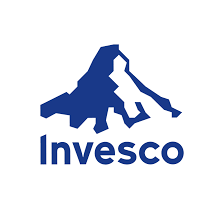Paul Chan, Head of Multi-asset and Pensions, addresses frequently asked investment questions to help you make sense of your MPF

Q: Why are investors concerned about the unwinding of the US balance sheet?
The overall recovery in the US is on track, with the unemployment rate coming in at 4.3% in May, the lowest since May 2001. In response to the stabilizing economy, the Fed concluded that the economy no longer needs help and therefore scheduled three increases in interest rates for 2017. In addition, the Fed is actively considering a profound change in US monetary policy – shrinking its portfolio of Treasuries and mortgage-backed securities. Many investors are concerned that the shrinkage of the balance sheet may impair global liquidity. Well, I don’t think so.
The Fed’s balance sheet in total now runs US$4.5 trillion, of which US$3.7 trillion came from buying Treasuries and mortgage-backed securities in response to the financial crisis in 2008. This quantitative easing aimed at injecting money into the economy and encouraging bank lending to revitalize the then anemic economic growth. The Fed stopped buying large quantities of assets in October 2014. Since then, it has kept the size of its balance sheet constant, buying just enough to replace maturing securities.
As long as the Fed just allows its portfolio of bonds to run off gradually as they mature, the shrinkage is unlikely to have any significant impact on global markets. This is because global liquidity is still well supported by other G5 central banks – a total of more than US$18 trillion, of which the US represents only about 23% (Note 1). The US balance sheet shrinkage itself will not undermine the global liquidity, as other central banks are unlikely to retreat their aggressive accommodative policies together.
Note 1: Macquarie Research, Bloomberg, as at 22 May 2017
Q: Under current conditions, what should pension investors be looking for?
Despite the fact the Fed is proposing to shrink its balance sheet, overall interest rates remain low, and investors struggle find any returns from government bonds. Equities remain the choice for pension investors seeking growth. We continue to favor US equities due to their large exposure to the world’s leading technology companies – companies that are shaping the world. These companies, representing about 20% of the US equity market, will not only benefit from the US domestic recovery but also global demand for their innovative products and services. Their earnings growth, much more sustainable than Europe, remains the key driver for the equity market, together with benign inflation and economic expansion.
Q: What do you make of European equities, which have much stronger returns this year?
Europe has been doing well this year, up 15.8% (MSCI Europe-EUR) over the past 12 months, driven mainly by cyclicals such as financials, industrials, energy and materials. Unlike the US, Europe is dominated by “cyclical stocks,” which are closely geared to economic conditions, and commodity prices. The strong earnings growth of European cyclicals is largely the result of stronger commodity prices in 2016, which may not be sustainable heading into the second half of the year as commodities have retreated recently. The outlook for Europe remains unclear given the series of political elections, which may lead to market swings that pension investors don’t want to see. The French election gives some indication on the German election scheduled for later in the year, but it will still need to be closely monitored. Structural headwinds surrounding Brexit, as well as high levels of excess leverage and negative geopolitical developments, are also likely to constrain growth in the region.
5ee082563144a90027d3fcbb
https://api-live.clare.ai

5ea81128dd3860002906b29d,5e8c92fa0c4fde00274f7c2d
Disclaimer:<br><br>INVESBot is not operated by a human person and therefore may not provide the right responses.<br><br>For your own protection, please do not provide your personal information to INVESBot as it will not be recognized or processed. The information that you enter through INVESBot will be stored automatically for as long as it is necessary (generally up to 25 months) only for the purposes of understanding user behavior, troubleshooting, reviewing the accuracy of and refining the responses provided by INVESBot, generally improving the programmed questions and answers in INVESBot and for no other purpose. If you enter personal information into INVESBot you are deemed to consent to such information being stored for such purposes.
Invesco Strategic MPF Scheme (the "Master Trust") currently offers the Default Investment Strategy and 12 Constituent Funds, comprising the following fund types: equity fund (including index- tracking fund), bond fund, money market fund, guaranteed fund and mixed asset fund.
The Guaranteed Fund of the Master Trust invests solely in an insurance policy issued by Principal Insurance Company (Hong Kong) Limited, which is also the guarantor (the "Guarantor"). Your investments in the Guaranteed Fund are therefore subject to the credit risk of the Guarantor. The Guarantor of the Guaranteed Fund will provide a guarantee of capital and a prescribed guaranteed rate of return only (i) if a qualifying event occurs and the Guarantor receives a valid claim or (ii) in other situations (as described in the appendix to the MPF scheme brochure). You should read the MPF scheme brochure carefully before investing in the Guaranteed Fund. Please refer to the risk factors section and the appendix of the MPF scheme brochure for details of the credit risk, guarantee features and guarantee conditions.
The MPF Conservative Fund of the Master Trust does not guarantee the repayment of capital.
Fees and charges of an MPF Conservative Fund can be deducted from either (i) the assets of the fund or (ii) member's account by way of unit deduction. The MPF Conservative Fund of the Master Trust uses method (i) and, therefore, unit prices/NAV/fund performance quoted have incorporated the impact of fees and charges.
You should consider your own risk tolerance level and financial circumstances before taking any investment choices or invest according to the Default Investment Strategy. When, in your selection of funds and/or the Default Investment Strategy, you are in doubt as to whether a certain fund and/or the Default Investment Strategy is suitable for you (including whether it is consistent with your investment objectives), you should seek financial and/or professional advice and make investment choice(s) most suitable for you taking into account your circumstances.
In the event that you do not make any investment choices, your contributions made and/or accrued benefits transferred into the Master Trust will automatically be invested in accordance with the Default Investment Strategy, which may not necessarily be suitable for you. Please refer to the section headed "Default Investment Strategy" for further information.
Investment involves risks. Past performance is not indicative of future performance. You should not invest solely based on the information provided in this section and should read the MPF scheme brochure for details, including the risk factors and product features.
You are encouraged to read our Site-Policies for the terms that apply to your use of this website.